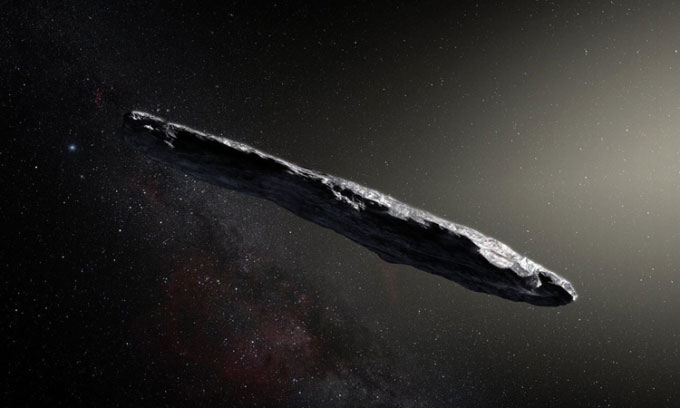Experts plan to launch a spacecraft using solar sail technology in early 2028 to study the asteroid ‘Oumuamua.
‘Oumuamua is the first interstellar object to “visit” the Solar System, with a peculiar shape resembling a cigar. A group of scientists has ambitious plans to send a spacecraft to chase this mysterious space object as it moves further away from Earth, Interesting Engineering reported on January 20.

Simulation of the interstellar asteroid ‘Oumuamua. (Photo: ESO/M Kornmesser)
After the Pan-STARRS1 Near-Earth Object Survey program discovered ‘Oumuamua on October 19, 2017, astronomers pointed out several anomalies indicating that it is unlike any other asteroids in the Solar System.
For instance, shortly after ‘Oumuamua was first detected, it changed speed, deviating from its initially predicted trajectory. The strange object also did not leave a trail of dust as it passed by. Professor Avi Loeb, an astrophysicist at Harvard University, and his research team have suggested that ‘Oumuamua could be an interstellar spacecraft, or at least a fragment of one.
‘Oumuamua is now beyond the reach of the most powerful telescopes, yet it remains a particularly intriguing object. This is why the research team at the Initiative for Interstellar Studies (I4IS) has proposed the Lyra Project – a project aimed at sending a solar sail probe to chase and analyze ‘Oumuamua before it disappears.
The spacecraft could launch in early 2028 and reach ‘Oumuamua around 2050 – 2054, considering its speed and trajectory as it leaves the Solar System. In the first four years, the spacecraft will orbit Earth twice and Venus and Jupiter once to gain gravitational assistance, propelling it toward the mysterious space object.
Solar sail technology (which uses large reflective sails to harness light momentum from the Sun and propel the spacecraft forward) will power the probe chasing ‘Oumuamua. Additionally, it will utilize a photon sail that partially derives energy from lasers on Earth.
Other research teams have previously proposed ideas to send spacecraft to ‘Oumuamua, but most would perform an Oberth maneuver around the Sun. Specifically, when the probe begins to fall into the Sun’s gravitational well, the thrusters would be activated to significantly accelerate the spacecraft. However, this method requires a massive shield to protect the spacecraft from the Sun’s heat and radiation. Instead, the I4IS team proposes to perform the Oberth maneuver around Jupiter, with the launch date not expected before February 2028 due to the current orbit of this planet.


















































